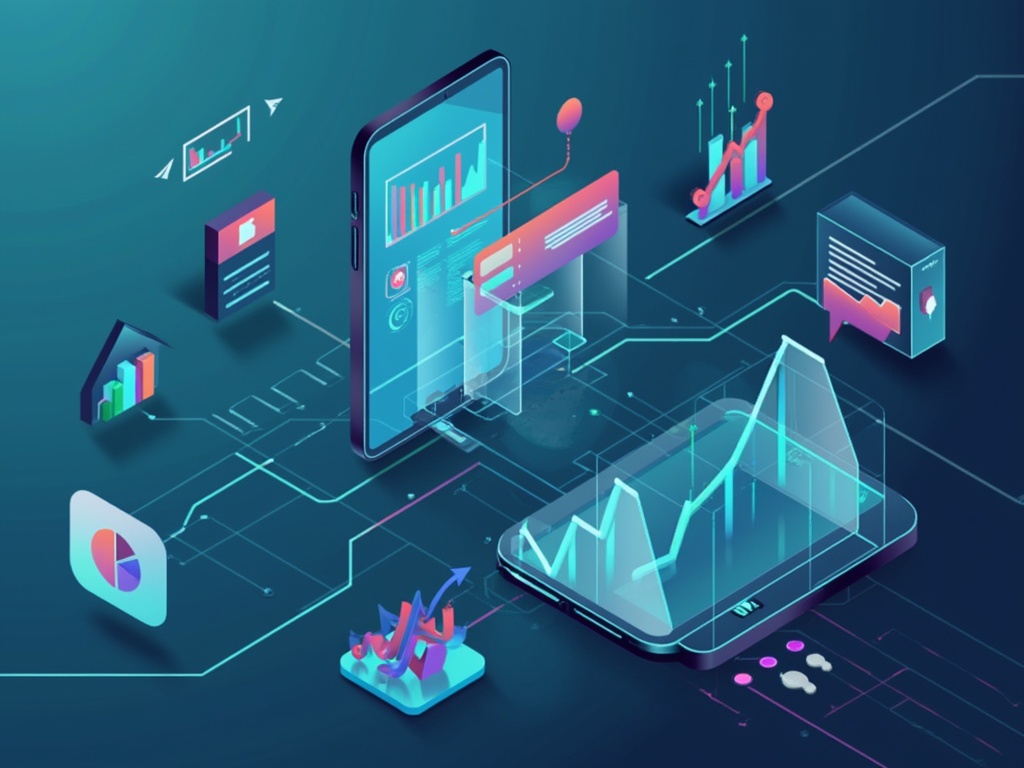Automated sales funnels are revolutionizing how businesses convert leads into customers. By leveraging technology and strategic marketing techniques, companies can create efficient and scalable conversion systems that work around the clock to generate sales.
Key Takeaways:
- Automated funnels streamline the sales process, saving time and resources
- Personalization is crucial for increasing conversion rates in automated funnels
- Effective funnels use data-driven insights to optimize each stage
- A mix of content types helps engage leads throughout the funnel
- Continuous testing and refinement are essential for funnel success
Understanding Automated Sales Funnels
Automated sales funnels are digital marketing systems designed to guide potential customers through the buying process without manual intervention. These funnels use a series of automated marketing steps to nurture leads, qualify prospects, and convert them into paying customers.
The beauty of automated funnels lies in their ability to work 24/7, providing a consistent experience for every lead that enters the system. By automating repetitive tasks and personalizing interactions, businesses can scale their sales efforts without proportionally increasing their workforce.

Key Components of High-Converting Funnels
To create an automated sales funnel that converts, you need to focus on several key components:
- Compelling lead magnets
- Engaging email sequences
- Personalized content delivery
- Strategic upsells and cross-sells
- Effective landing pages
Each of these elements plays a crucial role in moving leads through the funnel. For instance, a well-crafted lead magnet attracts potential customers, while personalized email sequences keep them engaged and guide them towards a purchase decision.
Crafting an Irresistible Offer
The foundation of any successful sales funnel is an irresistible offer. This offer should solve a specific problem or fulfill a desire that your target audience has. To create such an offer, you need to:
- Understand your audience’s pain points
- Provide clear value proposition
- Differentiate from competitors
- Offer a compelling guarantee
By focusing on these aspects, you can develop an offer that resonates with your audience and increases conversion rates. Remember, the goal is to make the offer so attractive that it becomes a no-brainer for your potential customers.
Leveraging Personalization for Higher Conversions
Personalization is a powerful tool in automated marketing. By tailoring your messages and offers to individual leads, you can significantly improve engagement and conversion rates. Use data collected throughout the funnel to segment your audience and deliver targeted content and offers.
Some effective personalization strategies include:
- Dynamic content based on user behavior
- Personalized product recommendations
- Customized email subject lines and content
- Adaptive landing pages
Optimizing Each Stage of the Funnel
To maximize conversions, each stage of your automated sales funnel needs to be optimized for performance. This involves:
- Crafting compelling top-of-funnel content to attract leads
- Developing middle-of-funnel nurturing sequences
- Creating persuasive bottom-of-funnel offers
Regular analysis and optimization of each stage ensure that your funnel remains effective as market conditions and customer preferences change. Use A/B testing to continually refine your messaging, offers, and user experience.
Implementing Effective Lead Nurturing
Automating lead nurturing is crucial for maintaining engagement throughout the sales process. Develop a series of touchpoints that provide value to your leads while gently guiding them towards a purchase decision. This can include:
- Educational content series
- Case studies and success stories
- Exclusive webinars or demos
- Limited-time offers
By consistently delivering valuable and relevant content, you build trust and position your brand as the go-to solution for your leads’ needs.
Measuring and Analyzing Funnel Performance
The secret to continuously improving your automated sales funnel lies in measuring and analyzing its performance. Key metrics to track include:
- Conversion rates at each stage
- Email open and click-through rates
- Average order value
- Customer lifetime value
- Return on investment (ROI)
Use these metrics to identify bottlenecks in your funnel and areas for improvement. Regular analysis allows you to make data-driven decisions and optimize your funnel for better results.
Conclusion: The Power of Automation in Sales
Creating automated sales funnels that convert is an ongoing process of refinement and optimization. By focusing on personalization, valuable content, and data-driven decision-making, you can build a powerful conversion machine that drives business growth. Remember, the key is to always put your customer’s needs first and provide value at every stage of the funnel.
Sources:
Frequently Asked Questions
What is an Automated Sales Funnel and How Does it Work?
An automated sales funnel is a digital marketing system designed to guide potential customers through the buying process with minimal human intervention. It uses automated marketing steps to nurture leads, qualify prospects, and convert them into paying customers. This funnel works 24/7, providing a consistent experience for every lead, and automates repetitive tasks such as email sequences, lead scoring, and content delivery to personalize interactions and scale sales efforts.
What Are the Key Components of a High-Converting Automated Sales Funnel?
The key components include:
- Compelling lead magnets: Attract potential customers into the funnel.
- Engaging email sequences: Keep leads engaged and guide them towards a purchase decision.
- Personalized content delivery: Tailor messages and offers to individual leads.
- Strategic upsells and cross-sells: Increase average order value.
- Effective landing pages: Capture lead information and convert visitors into leads.
How Do I Create an Irresistible Offer for My Automated Sales Funnel?
To create an irresistible offer, you need to:
- Understand your audience’s pain points: Identify the specific problems or desires of your target audience.
- Provide a clear value proposition: Explain how your product or service solves their problems or fulfills their desires.
- Differentiate from competitors: Highlight what makes your offer unique.
- Offer a compelling guarantee: Provide assurance to reduce risk for potential customers.
What Role Does Personalization Play in Automated Sales Funnels?
Personalization is crucial for increasing conversion rates. By using data collected throughout the funnel, you can segment your audience and deliver targeted content and offers. Effective personalization strategies include dynamic content based on user behavior, personalized product recommendations, customized email subject lines and content, and adaptive landing pages.
How Do I Measure and Optimize the Performance of My Automated Sales Funnel?
To continuously improve your funnel, you need to measure and analyze its performance. Key metrics to track include:
- Conversion rates at each stage
- Email open and click-through rates
- Average order value
- Customer lifetime value
- Return on investment (ROI)
Use these metrics to identify bottlenecks and areas for improvement. Regular analysis allows you to make data-driven decisions and optimize your funnel for better results. Utilize A/B testing to continually refine your messaging, offers, and user experience.
People Also Ask
How Do I Calculate the Conversion Rate of My Automated Sales Funnel?
Calculating the conversion rate of your automated sales funnel is crucial for understanding its effectiveness and identifying areas for improvement. The conversion rate is calculated using the formula:
Conversion Rate = (Number of Conversions / Number of Leads) x 100
For example, if you have 500 leads and 25 of them become paying customers, your conversion rate would be:
(25 / 500) x 100 = 5%
This means 5% of your leads are converting into customers. It’s important to calculate conversion rates at each stage of the funnel to identify bottlenecks and areas for optimization[4].
What Are the Key Components of a High-Converting Automated Sales Funnel?
A high-converting automated sales funnel relies on several key components:
- Compelling Lead Magnets: Attract potential customers with valuable offers such as eBooks, webinars, or free trials.
- Engaging Email Sequences: Use personalized and targeted email content to nurture leads and guide them through the funnel.
- Personalized Content Delivery: Tailor your messages and offers based on user behavior and preferences to increase engagement.
- Strategic Upsells and Cross-Sells: Offer relevant products or services at the right time to maximize the average order value.
- Effective Landing Pages: Ensure your landing pages are optimized for conversions with clear calls to action and minimal distractions[1][4].
How Can I Optimize Each Stage of My Automated Sales Funnel?
Optimizing each stage of your automated sales funnel involves several strategies:
-
Top-of-Funnel Optimization: Craft compelling content to attract leads, such as blog posts, videos, or social media ads.
- Use A/B testing to refine your messaging and user experience.
- Ensure your lead magnets are highly relevant and valuable to your target audience.
-
Middle-of-Funnel Nurturing: Develop nurturing sequences that provide value to your leads, such as educational content series, case studies, and exclusive webinars.
- Use data-driven insights to segment your audience and deliver targeted content.
-
Bottom-of-Funnel Offers: Create persuasive offers that address the specific needs and pain points of your leads.
-
Use personalization to tailor your offers based on user behavior and preferences.
-
Continuously analyze and optimize each stage to ensure your funnel remains effective as market conditions and customer preferences change[1][5].
What Role Does Personalization Play in Automated Sales Funnels?
Personalization is a powerful tool in automated sales funnels, significantly improving engagement and conversion rates. Here are some effective personalization strategies:
- Dynamic Content: Use user behavior to deliver content that is relevant to each lead.
- Personalized Product Recommendations: Suggest products or services based on the lead’s past interactions and preferences.
- Customized Email Subject Lines and Content: Tailor your email communications to address individual leads by name and reference their specific interests.
- Adaptive Landing Pages: Adjust the content and layout of your landing pages based on the lead’s previous interactions with your brand[1][5].
How Do I Measure and Analyze the Performance of My Automated Sales Funnel?
Measuring and analyzing the performance of your automated sales funnel is essential for continuous improvement. Here are the key metrics to track:
- Conversion Rates at Each Stage: Monitor the percentage of leads that move from one stage to the next.
- Email Open and Click-Through Rates: Track how engaging your email sequences are.
- Average Order Value: Measure the average amount spent by customers.
- Customer Lifetime Value: Calculate the total value a customer brings to your business over their lifetime.
- Return on Investment (ROI): Evaluate the financial return on your marketing and sales efforts.
Use these metrics to identify bottlenecks, make data-driven decisions, and optimize your funnel for better results[1][5].

